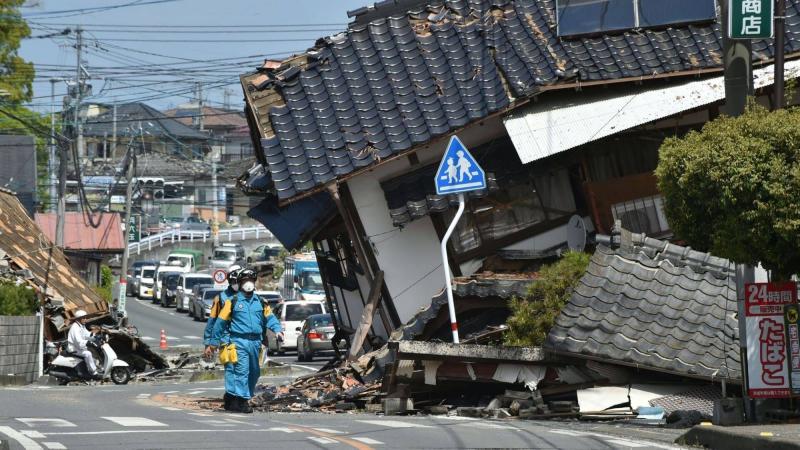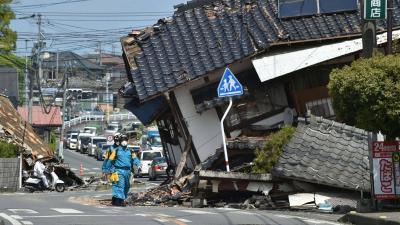Japan issued tsunami warnings on Monday following a series of strong earthquakes that shook the western regions. Footage showed tsunami waves hitting the western coast of Japan, amidst urgent evacuation calls. The Japan Meteorological Agency announced that the first tsunami waves reached the western coasts, prompting the Japanese Prime Minister to urge residents in certain areas to evacuate after a 7.4 magnitude earthquake.
Other videos depicted tsunami waves moving through waterways in Ishikawa Prefecture. A massive earthquake struck Ishikawa Prefecture in central Japan, with tsunami warnings issued for the Niigata, Toyama, and Ishikawa prefectures on the Sea of Japan side of the country. Evacuation is required for people in these areas.
The Japan Meteorological Agency reported that earthquakes in Ishikawa and neighboring prefectures included one that initially measured 7.4 in magnitude. Tsunami waves are already moving up waterways in Ishikawa prefecture, with more expected.
A video illustrated the earthquake's impact on a river in a Japanese city, which was visibly shaking violently. NHK warned that floodwaters could reach heights of up to 5 meters and urged residents to flee to higher ground or the nearest tall buildings as quickly as possible.
Footage from NHK showed a building collapsing amidst a dust cloud in the coastal city of Suzu. Additional footage displayed residents in Kanazawa trembling under tables during the tremors. The earthquake also caused buildings to shake in the capital, Tokyo, on the opposite coast. Hokuriku Electric Power Company reported power outages affecting over 36,000 homes in Ishikawa and Toyama prefectures.
High-speed rail services to Ishikawa were suspended, and telecommunications companies SoftBank and KDDI announced service disruptions for phone and internet in Ishikawa and Niigata. All Nippon Airways returned four planes that had taken off toward Toyama and Ishikawa airports after the earthquake, while Japan Airlines canceled most flights to Niigata and Ishikawa for the remainder of the day, according to Asahi TV.
The western coastal area houses a nuclear power plant, and Tokyo Electric Power Company, the plant's operator, is assessing for any issues, but no irregularities have been reported. The Nuclear Regulation Authority of Japan indicated that the Shika plant, operated by Hokuriku Electric in Ishikawa and closest to the earthquake's epicenter, had already shut down its reactors prior to the earthquake as part of routine inspections and had not been affected.
Japan is highly susceptible to seismic activity, and a previous earthquake and tsunami caused meltdowns at a nuclear plant in 2011.
**South Korea Warns of Tsunami**
The Korea Meteorological Administration reported that the first tsunami waves reached the eastern shores of South Korea at 09:21 GMT, measuring 45 centimeters high following the strong earthquake in Japan. The agency stated that tsunami waves could increase and may continue for over 24 hours post-earthquake.
The South Korean Ministry of the Interior and Safety warned residents in Gangwon Province to take precautionary measures and urged them to evacuate to higher ground. Earlier on Monday, the meteorological agency cautioned of rising sea levels in certain areas of Gangwon Province after an initial 7.6 magnitude earthquake struck northern central Japan. Tsunami waves of 0.3 meters were expected to hit the eastern coast of South Korea between 09:29 and 10:17 GMT.
Authorities in Gangwon Province sent urgent text messages advising citizens to stay away from the coast and evacuate to elevated areas, with the city of Samcheok recommending residents move to areas higher than a three-story building.
**Russia: Sakhalin Island at Tsunami Risk**
Russian news agency TASS cited the Russian Emergency Ministry on Monday stating that areas in the Russian island of Sakhalin, near Japan and along the Pacific coast, are at risk of tsunami waves, and evacuation operations are currently underway. Reports revealed that Russia issued tsunami warnings for the cities of Vladivostok and Nakhodka in the far east of the country.
Media outlets reported that authorities in the coastal city of Vladivostok urged anyone sailing in local waters to "return to shore quickly." TASS indicated that officials in the Sakhalin and Khabarovsk regions noted that the wave does not pose a danger to life. The Russian Emergency Ministry denied earlier reports regarding the evacuation of residents from at-risk areas in Sakhalin.




